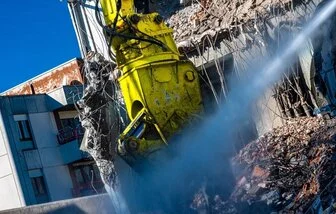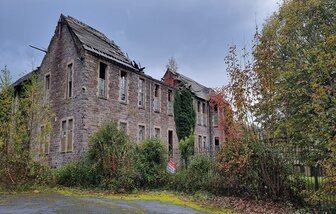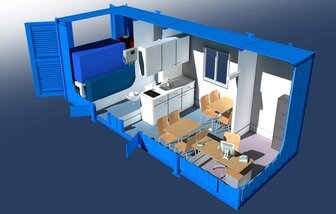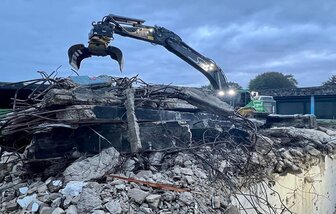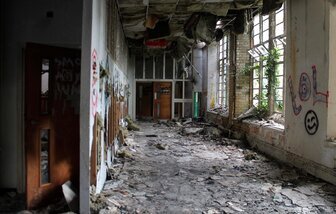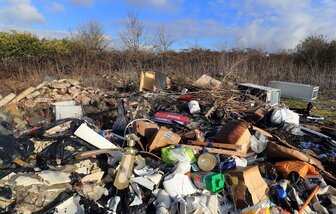Welfare Facilities in Demolition
When it comes to demolition projects, ensuring the safety and well-being of workers is of utmost importance. This includes providing appropriate welfare facilities that cater to the needs of the workers on-site. In this article, we will explore the importance of welfare facilities in the demolition industry and discuss the various types of facilities that should be provided.
All you need to know about Welfare Facilities in Demolition
Learn about the importance of welfare facilities in the demolition industry and the various types of facilities that should be provided. Discover the legal requirements for welfare facilities and the benefits of prioritizing worker safety and well-being in demolition projects.
Consult with industry experts or refer to local regulations and guidelines for more information on welfare facilities in demolition.
Welfare facilities are an essential component of any demolition project. By providing suitable facilities, employers prioritize the well-being and safety of their workers, leading to increased productivity and job satisfaction.
Compliance with legal requirements is crucial to avoid penalties and maintain a positive reputation in the industry. Investing in welfare facilities is not only a legal obligation but also a moral responsibility that should be upheld by all employers in the demolition industry.
For more information on welfare facilities in demolition, consult with industry experts or refer to local regulations and guidelines.
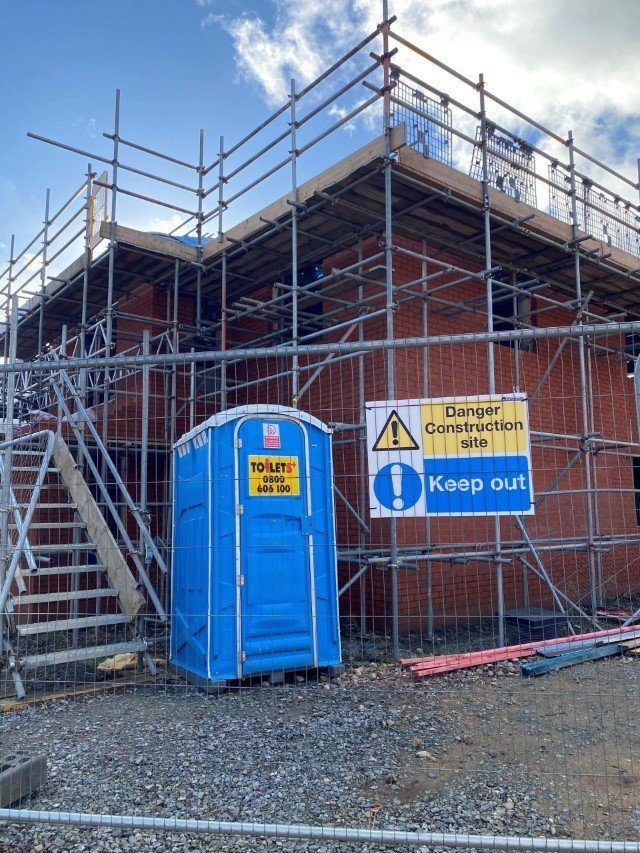
Welfare facilities play a crucial role in maintaining the physical and mental well-being of workers during demolition projects. These facilities not only comply with legal requirements but also contribute to a safer and more productive work environment. By providing adequate welfare facilities, employers can demonstrate their commitment to worker welfare and improve overall job satisfaction.
1. Rest Areas: Demolition work can be physically demanding, and workers need regular breaks to rest and recharge. Rest areas should be clean, comfortable, and equipped with seating, tables, and amenities such as drinking water and vending machines.
2. Toilets and Washing Facilities: Access to clean and hygienic toilets is essential for workers’ health and well-being. Adequate toilet facilities should be provided, including separate facilities for male and female workers. Additionally, washing facilities with hot and cold water, soap, and drying facilities should be available.
3. Changing Rooms and Lockers: Demolition work often involves wearing protective clothing or uniforms. Changing rooms equipped with lockers enable workers to change into their work attire and store personal belongings securely.
4. Dining Facilities: Providing a dedicated dining area allows workers to have meals away from the work site, promoting a healthy work-life balance. The dining area should have tables, chairs, and facilities for heating or refrigerating food.
5. First Aid Facilities: Accidents can happen on any construction site, including demolition projects. Having well-stocked first aid facilities, including trained personnel, is crucial for providing immediate medical assistance in case of injuries or emergencies.
6. Shelter and Rest Facilities: In certain weather conditions, such as extreme heat or cold, workers may require sheltered areas to rest and protect themselves. These facilities should be provided to ensure the well-being and safety of workers.
Ensuring the well-being and safety of employees is a top priority for any responsible employer. In the United Kingdom, there are legal requirements in place to ensure that appropriate welfare facilities are provided in the workplace. This blog post will outline the key legal requirements for welfare facilities in the UK, helping employers understand their obligations and employees to know their rights.
What are Welfare Facilities?
Welfare facilities refer to the basic amenities and services that are necessary to support the well-being of employees in the workplace. These facilities include, but are not limited to, toilets, washing facilities, drinking water, rest areas, and changing rooms.
Legal Requirements
The legal requirements for welfare facilities in the UK are outlined in the Workplace (Health, Safety and Welfare) Regulations 1992. These regulations apply to all workplaces, regardless of size or industry.
Toilets
The regulations state that employers must provide adequate and suitable toilet facilities for their employees. The number of toilets required depends on the number of employees and the nature of the work being carried out. Toilets should be clean, well-maintained, and easily accessible.
Washing Facilities
Employers are required to provide adequate washing facilities, including clean and functional sinks, with hot and cold running water. Soap or other suitable cleansing agents must also be provided, along with towels or hand-drying machines.
Drinking Water
Employees must have access to an adequate supply of drinking water. This water should be readily available, clean, and preferably provided through a suitable tap or drinking fountain.
Rest Areas
Employees should have access to suitable rest areas where they can take breaks and relax during their working hours. These rest areas should be clean, comfortable, and equipped with seating facilities.
Changing Rooms
If employees are required to change into special clothing for work, such as uniforms or protective gear, employers must provide suitable changing rooms. These rooms should be clean, well-ventilated, and equipped with lockers or other secure storage options.
Additional Considerations
While the legal requirements provide a framework for welfare facilities, employers should also consider the specific needs of their workforce. For example, workplaces with pregnant employees may need to provide additional facilities such as suitable seating or accommodation for breastfeeding.
It is important to regularly assess and maintain welfare facilities to ensure they remain in good working condition. Regular cleaning and maintenance should be carried out, and any issues or repairs should be addressed promptly.
Conclusion
Providing adequate welfare facilities is not only a legal requirement in the United Kingdom, but it is also essential for promoting the well-being and productivity of employees. By understanding and meeting these legal requirements, employers can create a safe and comfortable working environment, while employees can feel confident that their basic needs are being met. Compliance with welfare facility regulations is not only a legal obligation but also a demonstration of a commitment to the welfare of employees.
Remember, the information provided in this blog post is for general guidance only, and it is always advisable to seek professional advice to ensure compliance with the specific legal requirements applicable to your workplace.
What is demolition?
The process involves Rotational hydraulic shears and rock-beakers attached to specialist excavators are also used to cut or break through wood, cut steel and crush concrete which reduces the structure to a rubble
Securing your demolition project
Implementing robust security measures, such as perimeter fencing, access control, signage, surveillance systems, and proper lighting, can significantly reduce the
Demolition hazards
If a demolition project is well planned the risks of injury and death can be minimised. It should be emphasised that the planning and execution of a demolition project should only be done by appropriately competent persons.
Notification of intended demolition Section 80
If your considering demolishing an existing building you will need to submit a demolition, Section 80 Notice together with your (RAMS) to your local authority according to section 80
Welfare facilities
Welfare facilities are an essential component of any demolition project. By providing suitable facilities, employers prioritize the well-being and safety of their workers, leading to increased
Demolition plant
Demolition plant is essential in the construction industry, as they ensure the safe and efficient removal of structures. By following strict guidelines and regulations, these plants prioritise safety, efficiency, and sustainability.
Utilities disconnection
Terminating utilities at the boundary is a critical step in the demolition process. It ensures the safety of the demolition crew and the surrounding environment, helps comply with regulations, prevents damage to utilities
Internal soft strip
Soft strip demolition is a crucial process that involves the removal of the internal structure of a building, making it ready for demolition or refurbishment. This process includes the careful removal of various materials.
Planning your demolition project
Learn how to create an effective demolition plan for your construction project. This comprehensive guide covers the key steps, including site assessment, hazard identification, safety measures, waste management, and more.
Managing asbestos
Learn about the dangers of asbestos, its different types, and where it can be found. Understand the health risks associated with asbestos exposure and the importance of proper testing and safe removal. Protect yourself and others from the harmful effects of asbestos.
Dealing with waste
Learn about waste management practices in demolition projects and the legal requirements that must be followed. Understand the types of demolition waste, effective waste management practices, and the laws and regulations governing waste management
Hazardous waste liquids
Hazardous liquids in demolition projects. Understand the importance of identifying, segregating, and properly disposing of hazardous waste. Follow the guidelines the safe handling, storage, and disposal of hazardous
Ready to start your project ?
Let's Work Together
Please complete the form below and someone from the Total team will be in touch.

